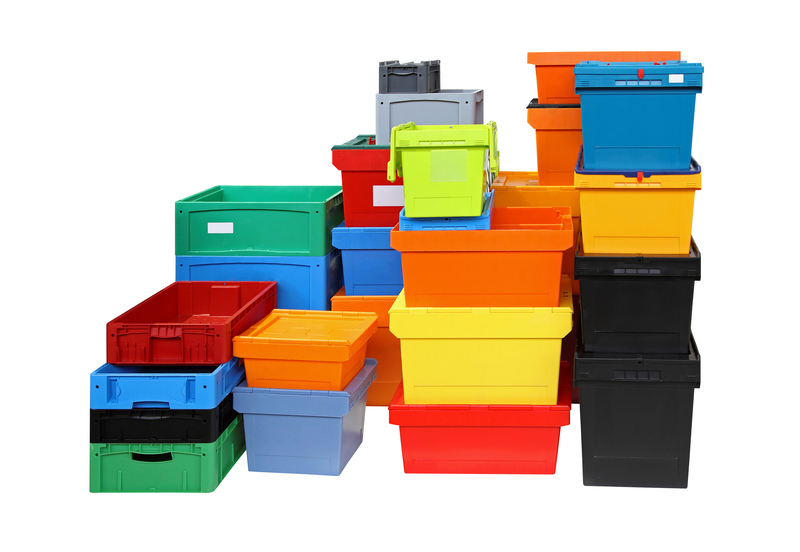How to Pack Clothes, Kitchenware, and More for a House Move: The Ultimate Guide
Preparing for a house move can be exciting, but the process of packing your belongings, especially clothes, kitchenware, and other household items, may often seem daunting. However, with the right strategies, organization, and packing tips, you can streamline the process and ensure everything arrives safely to your new home. In this comprehensive guide, you'll learn how to pack clothes, kitchen items, fragile goods, and more efficiently for a smooth and stress-free relocation.
Why Proper Packing is Important for a House Move
Moving is more than just transferring items from one place to another. The way you pack your belongings can directly impact:
- The safety of your valuables
- The speed of your move
- The ease of unpacking and settling in
- The overall moving cost (by optimizing space and minimizing risk)
Proper packing methods safeguard your items from damage and loss while making the transition much easier and more efficient.

Essential Packing Materials and Supplies
Before you begin, gather all the necessary supplies to ensure a smooth packing process:
- Sturdy boxes in various sizes
- Wardrobe boxes for clothes
- Bubble wrap and packing paper
- Packing tape and dispensers
- Permanent markers for labeling
- Zip-top bags for small parts
- Trash bags and vacuum-seal bags
- Plastic bins for items needing extra protection
- Furniture pads or blankets
General Tips for Efficient Packing
- Start early - Begin at least a month before moving day
- Declutter - Sort and donate or sell items you no longer need
- Pack room by room to stay organized
- Label each box with details of its content and destination room
- Keep an inventory list for valuable and essential items
- Disassemble large furniture in advance
- Use specialty packing materials for fragile items
How to Pack Clothes for Moving
Packing your wardrobe is often a major concern when moving. Use these methods to keep your clothes safe, organized, and wrinkle-free:
1. Declutter Your Clothing Collection
- Sort clothes by season, purpose, and condition
- Donate, sell, or recycle items you haven't worn in a year
- Separate out off-season clothes for storage or packing first
2. Choose the Right Packing Containers
- Wardrobe Boxes: Ideal for hanging clothes, as they keep garments wrinkle-free and ready to wear
- Suitcases and Duffle Bags: Cost-effective and practical for heavier garments and shoes
- Vacuum Bags: Space savers for bulky winter clothing and bedding
- Cardboard boxes for folded items such as t-shirts, pajamas, and jeans
- Drawer organizers for small accessories like socks, belts, and ties
3. Different Packing Methods for Clothing
- Hanging Method: Leave clothes on hangers and transfer them directly into wardrobe boxes
- Rolling: Roll t-shirts, pants, and other soft clothing to save space and minimize wrinkles
- Folding: Use layering for shirts and blouses to avoid deep creases
- Bundle wrapping: Fold a layer of clothing around a core item for wrinkle protection
4. Keep Essentials Handy
- Pack a separate suitcase with enough clothes for a few days, including sleepwear and undergarments
- Set aside a laundry bag for dirty clothes during the moving process
How to Pack Kitchenware: Plates, Glasses, and Appliances
Packing the kitchen is typically one of the most challenging parts of a house move due to the abundance of fragile items and cookware. Here's how to do it safely and systematically:
1. Declutter Before Packing
- Get rid of mismatched lids, old appliances, and unused utensils
- Donate unopened non-perishable food
2. Gather Specialty Packing Supplies
- Dish packs or double-walled boxes for fragile kitchenware
- Bubble wrap, packing paper, or soft kitchen towels for cushioning
- Plastic wrap to keep silverware and utensils in place
- Clear tape and markers for labeling
3. Step-by-Step Guide for Packing Different Kitchen Items
Plates, Dishes, and Bowls
- Wrap each item individually with packing paper or bubble wrap
- Place plates vertically in the box, like records, to prevent breakage
- Fill gaps with crumpled paper or towels to prevent shifting
- Label boxes as "Fragile" and indicate "This Side Up"
Glasses, Cups, and Stemware
- Stuff the interior of each glass with paper for extra support
- Wrap glasses completely and use cell boxes to keep items separate
- Avoid overpacking
- Mark boxes as "Fragile"
Pots, Pans, and Bakeware
- Stack smaller pans inside larger ones with paper or towels in between
- Wrap lids separately
- Secure handles with bubble wrap
Appliances and Gadgets
- If possible, use original packaging
- Remove blades, batteries, and detachable parts for separate packing
- Secure wires and wrap appliances in paper or towels
- Label boxes with contents and room destination
Knives and Sharp Tools
- Wrap knives in several layers of newspaper, then bubble wrap
- Secure bundles with rubber bands
- Pack vertically with blade tips down
- Clearly label box as holding sharp objects
Packing Electronics and Other House Items
Electronics
- Take photos of cable configurations before disconnection
- Use original boxes where available
- Wrap screens in anti-static cloths and pack with plenty of cushioning
- Label components and cables
Linen, Bedding, and Towels
- Pack sheets, blankets, and towels in large, labeled boxes or vacuum-seal bags to save space
- Use extra linens to cushion fragile items
- Set aside one or two sets for immediate use at your new house
Books and Documents
- Use small boxes--books can become very heavy
- Pack books flat or upright with spines against the box edge
- Protect important documents in waterproof folders or file boxes
Decor and Fragile Items
- Wrap artworks and mirrors in bubble wrap or special moving blankets
- Use custom-fit boxes for valuable pieces
- Label boxes on multiple sides as "Fragile" and "This Side Up"
Tips for Packing Difficult and Unusual Items
- Plants: Water plants a few days before, pack them in open boxes, and keep them upright
- Lamps: Remove bulbs, wrap bases and lampshades separately
- Children's Toys: Bag up small parts, pad stuffed animals in large boxes
- Jewelry: Use pill organizers or egg cartons to keep pieces untangled and safe
Moving Day: Last-Minute Packing Guide
- Pack a moving essentials bag--include snacks, toiletries, medications, phone chargers, basic cleaning supplies, and your most important documents
- Keep valuables and irreplaceable items with you if possible
- Do a final sweep of each room before the truck leaves
Common Mistakes to Avoid When Packing for a House Move
- Procrastinating and rushing at the last minute
- Overfilling boxes and risking breakage
- Under-labeling, making unpacking chaotic
- Forgetting to set aside essentials for the first night
- Not protecting fragile items well enough
Unpacking and Settling into Your New Home
Once you arrive, use your clearly labeled boxes and inventory list to:
- Unload boxes room by room
- Unpack essentials first--bedding, basic cookware, and personal items
- Check for any damage during transit and file claims promptly if using professional movers
- Recycle or reuse packing materials to reduce waste

FAQs: How to Pack for a House Move
1. Is it worth hiring professional packers?
If you're short on time or want extra protection for high-value items, hiring professionals may be worth the cost. For most moves, following the strategies above will help you safely pack clothes, kitchenware, and all household items yourself.
2. How can I pack more efficiently?
Declutter before packing, gather supplies in advance, and tackle one area at a time for best results.
3. What's the best way to transport jewelry and small valuables?
Keep them with you personally, using organized and padded containers.
4. How do I avoid breakage when moving dishes and glasses?
Double-wrap items, use sturdy boxes, and cushion gaps with soft materials like towels and packing paper.
Conclusion: Moving with Confidence
By following these expert tips on how to pack clothes, kitchenware, bedding, electronics, and more for a house move, you can reduce stress and minimize risk. Plan ahead, label everything carefully, and use appropriate packing supplies to ensure a seamless transition into your new space. Whether you're moving across town or across the country, a well-organized packing process sets you up for a successful fresh start in your new home!



